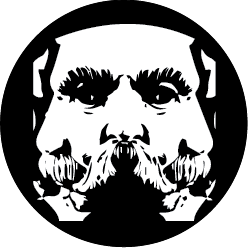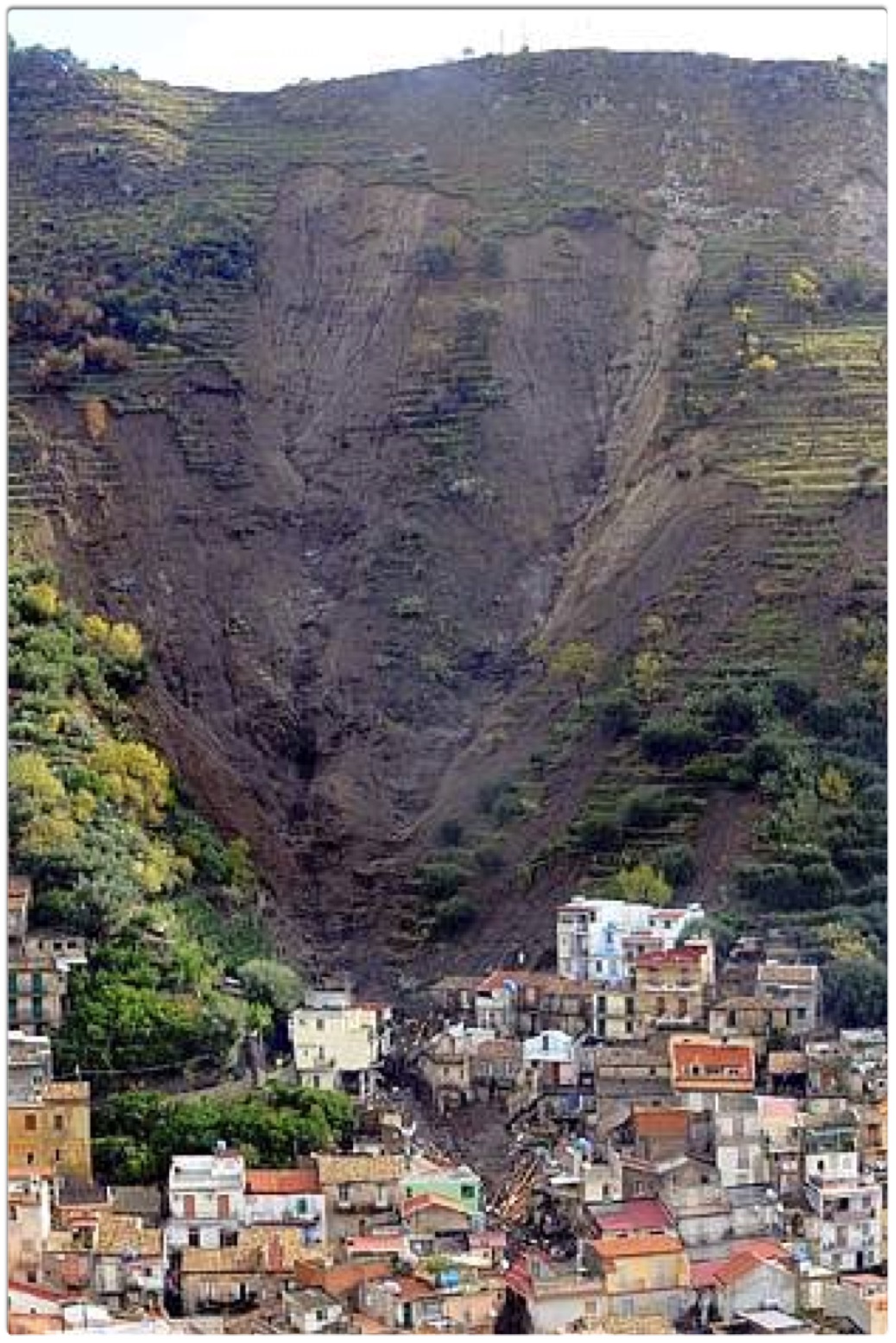On Participation – How to do it?
by Federico Bonelli (fredd@trasformatorio.net)
I am very grateful for the chance of expressing my views and experiences today at the NGI-Saloon https://www.ngi.eu/event/ngi-forward-salon-foundationals-on-participation/ (the recording of the talk is available on the site)
The occasion for this talk has been given to me by the paper co-authored with Sabrina Sauer titled “Collective improvisation as a means to responsibly govern serendipity in social innovation processes” published in the Journal of Responsible Innovation in 2020.
The broad scope of this talk is: “How to set up participated and effective societal processes that onboard all stakeholders”
- the processes might involve technologies like #cryptography, #DLT, #Big-Data, #SSI, #Robotics and #AI but we will not need to give any detail on those, is technology agnostic
1. Introduction to a Lab
Trasformatorio started as a laboratory, artistic in scope, whose scope was to experiment ways to create site-specific arts together. Is named Trasformatorio because I shared with my peers the belief that the scope of art is to engage in transformation.
Our scope was to work as a laboratory for enacting transformations.
A Laboratory from latin Laboratorium, a place/space/time to work in. And is populated by participants. Is a very concrete concept. Work is a term that has many meanings in our tradition, not only the synonymous of labour. There is the work you do on yourself, the work you do to bridge with others, the work of the actor to possess their character’s actions upon the textual matter of her character in the play. Work is what you do with presence, intent and quality. And these tree concepts, among others are what the artist is busy with most of the time. And they are very well defined in the each context of art, especially in the 20th century performance art currently referred to as theatre.
Since youth I worked with technology as a “smanettone”, a form of curiosity-led hacker that fiddles with stuff. In the last 25 years I have been hacking together media rich performances, from pieces that were intended for something else, rarely doing twice the same operation. I studied many things for many different reasons, rarely the canonical ones and always at the fringes. Collaboration in these endeavours was everything, and constructing a good environment to collaborate always challenging. I learned most of what I know on independent film sets and professional theatre productions (opera especially). Is a more innovative environment that anyone in IT dreams about.
When I was exposed to the current methodologies for innovation and product design commonly used in IT I felt that a big occasion was lost. It was 2007 in Philips Home lab. I knew there was a coherent corpus of reality bending techniques I had become aware in the field of arts, that where completely ignored by the industry. This hype-cycle prone industry of innovation was blind to art established methodologies and proved self destructive.
I began using what I had learned cross pollinating with a non-disciplinary hacker attitude. I am still doing it in many ways. The lab was conceived to experiment and learn together with others. Started in 2013 became immediately a tool useful for other scopes. This is the sense of this how-to presentation on participation.
1.1. Embody Situations
the processes that interests us are in line with the European commission and respond to the need of human centric, ethical and inclusive rules of engagement for regenerative and sustainable practices
- have to be economically viable, produce spin offs and measurable results.
- I will start to show you some results from the Trasformatorio activities in seeding ideas
- of urban and rural regeneration and some of the techniques of involvement, communication and co-design we have adapted, invented and used in the realm of innovation.
- I will use both examples from practice and elements of theory.
- Theory is informed by doing, as well as a skeptic you go to theory when you need it picking up the one you need for moving forward your practice
- examples are taken and evaluated in context (in vivo res)
- Some of you have already noted something strange in the title of my talk: “How to do (it)”:
- There is a well known pamphlet from Lenin titled “what to do” (Lenin)[^fn1]
- Don’t get scared (yet)
Lets start with a small experiment:
Sit straight. Close your eyes. Take a deep breath.For a moment allow a change of thought-form: allow yourself to move away from my words. Let them float. Words power is to enforce the notion of “knowledge as a machine”. That is the “what to do”, not the how. Feel with your eyes closed the sourroundings. The space around moves like a sphere and is sucked away by my voice, the monitor, the walls, the books you might have on your desk. Acknowledge.
When you step into your feeling of being here, with your enlarged, connected, augmented, acting and posing, breathing, playing, busy BODY you set your whole up in a situation that is more than a conceptual machine. A body, yours that is playing in the world NOW in this moment, HERE.
If you start from your own body here and now, then is not the what you should be busy with. The HOW can be the only thing you can enact in a flow (Crisippus)
- Here and now you and me is not a dual relationship. The situation we established is a powerful third element, an element of DESIGN
- Creating a situation were you change your state of being and open up to how is trasformatorio main methodological concept and design tool and the constant element of any art form
- I will try to question (and avoid) visual metaphors and to use bodily related ones
- the slap of the zen master!
- don’t worry I also have slides
- you can open your eyes
- I want your mind now to move from the methodological assumption that knowledge is a product of analysis, to participation as a form of knowledge;
- to know is often understood as “intending a finite number of elements and their interactions in a causal scheme” (either deductive or inductive)
- think instead in the terms of embodiment: to know becomes “an awareness of large numbers of interconnected ever-changing networks of relations”
- We will see that this shift will better adhere to our models of understanding the world through technology than we think
- the above participatory definition of knowledge is better represented by instruments from:
- (surprise!) (classical and statistical) mechanics and theory of probability (like ergodic theorem, space of events and measure)
- complexity theory toolkit (if we had one) especially simulation, self-similarity, bifurcation and sensibility to initial conditions
- Participated learning communities can have a time-space, place, rituals etc… Think makerspaces, TAZ, Permaculture gardens, Utopian University Campuses…
- We give for granted a move from an ethic of domain as in “humanity versus nature” to a less damaging concept like Gaia or paha-mama. But we need as well to be practical and effective and allow small scale and medium scale change not only the heroic (and ineffective) one.
- Ostrom discoveries about a non-tragic common
- Doughnuts instead of pies
Maybe a space of COmmonISM:
“After half a century of neoliberalism, a new radical, practice-based ideology is making its way from the margins: commonism, with an o in the middle. It is based on the values of sharing, common (intellectual) ownership and new social co-operations. Commoners assert that social relationships can replace money (contract) relationships. They advocate solidarity and they trust in peer-to-peer relationships to develop new ways of production.” (P. Gielen)
P. Gielen, Commonism (op.cit)
https://www.onthecommons.org;https://transitiontownmedia.org/; etc..
And to scare off Lenin once and for all (and show we read what we quote): our work indicates how to move out from the need of direct a revolution to the embodiment of a shared feeling of participated evolution ( as in Haraway).
[^fn1]: Что делать? (1902) Chto delat’? the tytle of Lenin’s pamphlet refers to a most famous samizdat piece with the same title by Nicholas Černyševskij; Composed in 1862 and 1863 in jail. Because of his ideas Černyševskij spent most of his life thereafter as prisoner and exiliee…
1.2. Trasformatorio LAB
So let’s go full on on HOW WE DO IT Open word, embodied methodology, anti problematic approach (there are no problems nor solutions), open narratives, open data, free software/hardware how all this elements might work? First let’s set the right scale! We want to go somewhere, deeply, bringing with us everyone, finding and realising a dream, we set into a meaningful ride in the unknown. It can be dangerous. Square off with our limited resources, enacting a powerful transformation, playing with the imaginary… that is a lot of stuff. I see all the technologists and the managers and the economists here nodding and resisting with a devil’s advocate grin on their faces and a pocket full of concepts and laws. You have your reasons.
Sounds hard? Acting out effectively a production process fluidly from the real open world situation is what some arts are specialised into: musical improvisation, street art, documentary film to say a few. As well site specific performance, guerrilla and special operations are about optimal performance in the flow of situations. They all have developed strict and effective methodologies, a pedagogy, tons of tricks in the bag and as many business models you might dream of.
First we have to set out into a situation designed by us to help reach our goals
1.2.1. Design for situation
Our central idea is the construction of situations, that is to say, the concrete construction of momentary ambiences of life and their transformation into a superior passional quality. We must develop a systematic intervention based on the complex factors of two components in perpetual interaction: the material environment of life and the behaviors which that environment gives rise to and which radically transform it.
G. Debord, Towards a Situationist Internationale, 1957
New Babylon offers only minimal conditions for a behaviour that should remain as free as possible. Every limitation of movement, of the creation of mood and atmosphere should be inhibited. Everything should remain possible, everything should be able to happen. The environment is created by the activities of life not the other way around.
‘… it is possible to form a fairly clear idea of an as yet uninhabited world. It is more difficult to populate this world with people who live so very differently from ourselves: we can neither dictate nor design their playful or inventive behavior in advance. We can only invoke our fantasy and switch from science to art. It was this insight that prompted me to stop work on the models and to attempt in paintings and drawings, however approximately, to create some New Babylonian life.
This was as far as I could go. The project exists. It is safely stored away in a museum, waiting for more favourable times when it will once again arouse interest among future urban designersConstant, New Babylon, 1956-1974
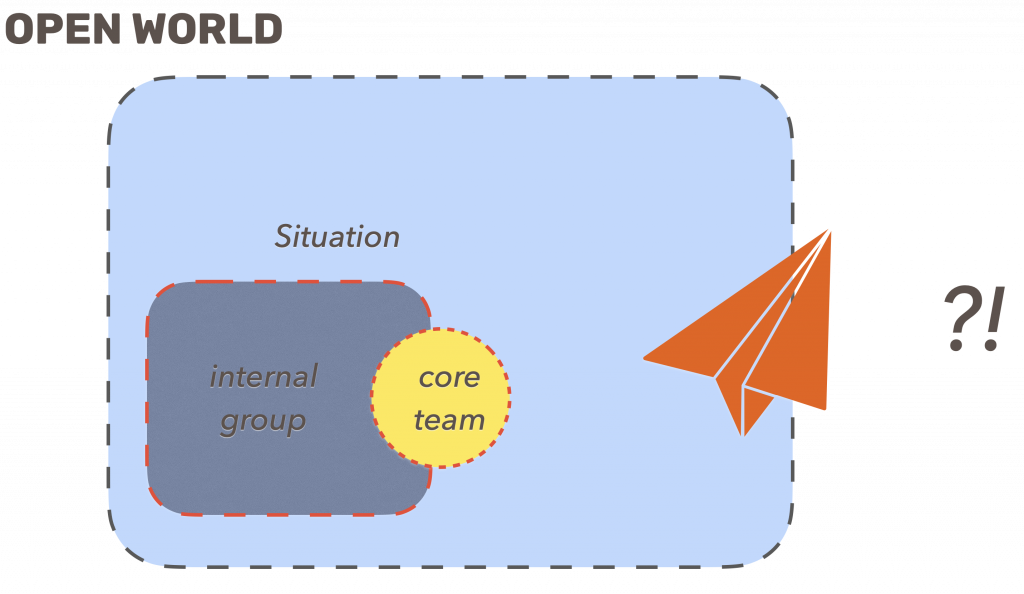
About the open word we have to remember that is influence is constant and will never be foreseen completely by us but we can design the situation to our advantage to have awareness and complicity.
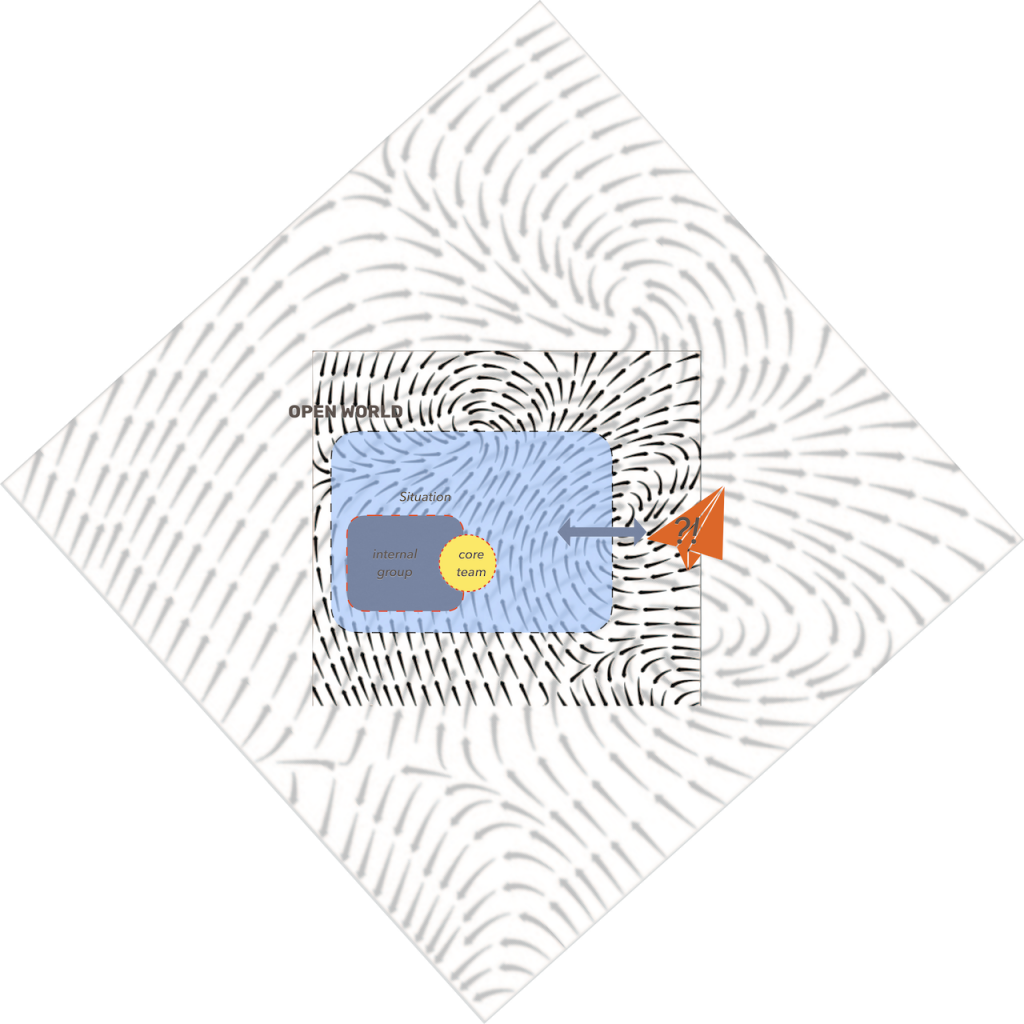
So allow me to start from a proper description of a situation we designed in with a group of 35 artists in 2018
1.3. Giampilieri 2018
The case of Giampilieri illustrates the T-zero, what we have learned to think as the first intervention into a designed flow with the scope of inverting the tendency and structure a possible regenerative process.
Let’s introduce the case with the image below:
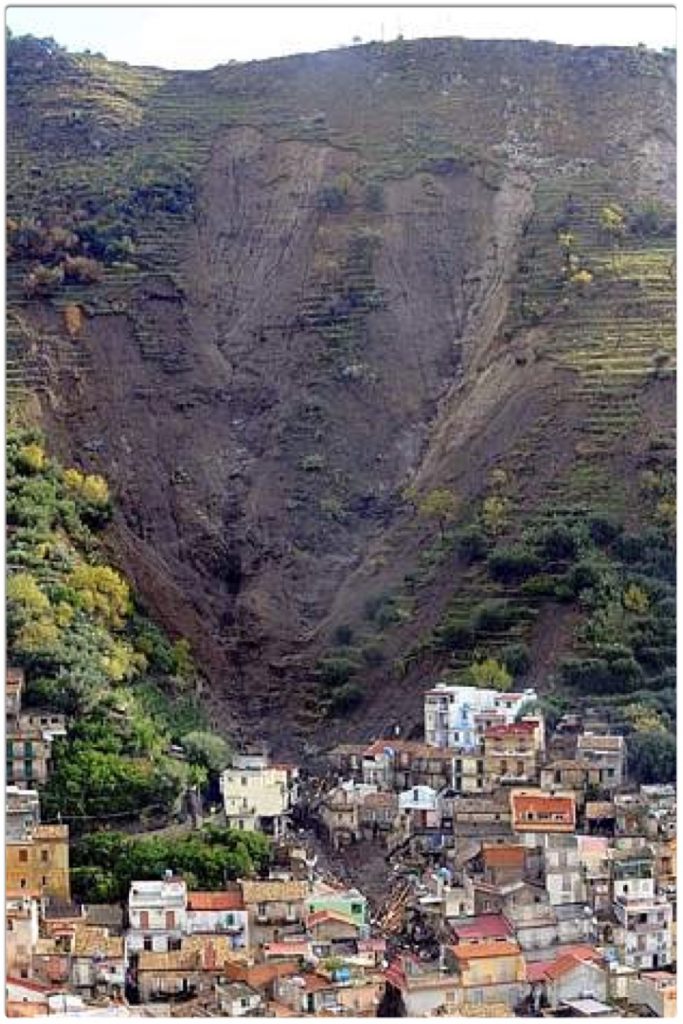
- The image shows the effects of a “broken alliance” and “why the remote areas matter”.
- Look the photo above. The landslide that killed 37 people in the village of Giampilieri and Scaletta in 2009. You can see that the mountain side was not exactly “natural environment”. Consisted in abandoned cultivated terraces. This way of farming the mountain side (with olives, grapes and greens) has been used for 3000 years in this zone and abandoned only after WWII.
- We did 2 campaigns in the area, 2017/2018.
- “How did we came up with this?
- 3 hours of exceptional rain (230mm)
- The landslide interrupted main lines of communication between Catania and Messina (train, Road and Highway) for months
- What was the response?
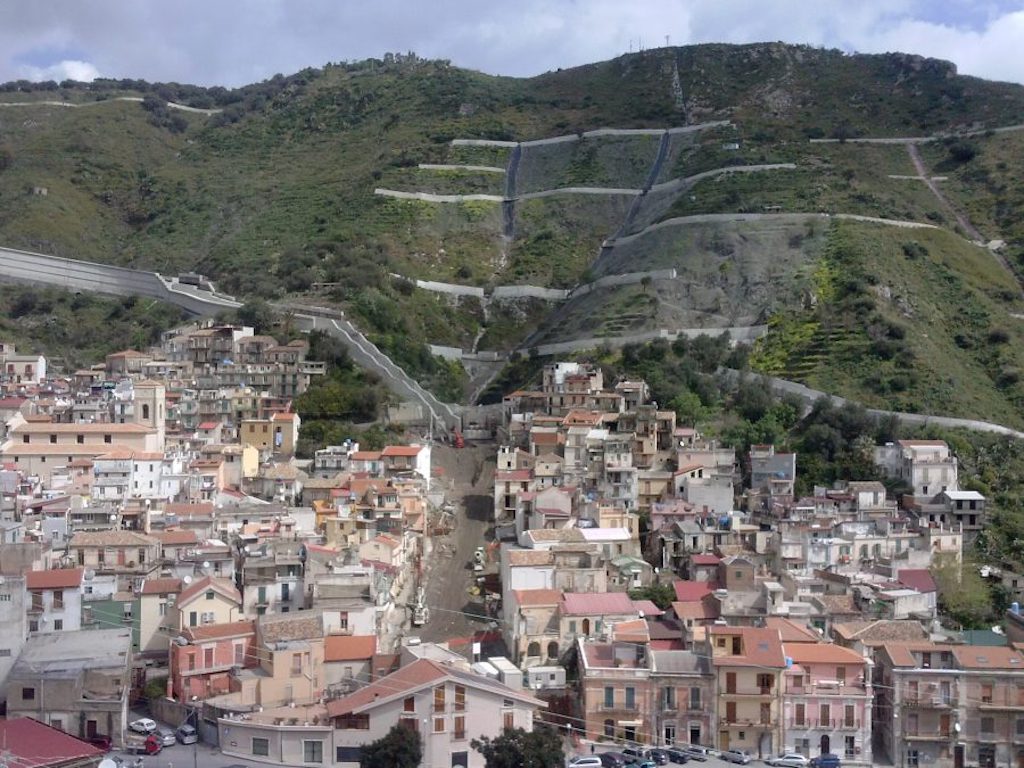
- The image has been taken during the works that have been set up to control the landslide. A whole structure engineered to keep the mountain from falling.
- The works in Giampilieri costed 175 millions Euros entirely spent in concrete.
- Italcementi mainly provided the concrete.
- Not a surprise that the manager of Italcementi run for major of Messina in 2018.
- Operation left behind a depopulated village, traumatised, struggling with its deep identity crisis and with no economical resilience. Young people emigrated, house value dropped etc.
Is there a problem? Anything that can benefits from a description in terms of conceptual machines that might identify problems to be solved? We believe that to see a problem in Giampilieri is a way to miss the point, same perspective thinking that produced first the catastrophe and then the “solution” to it.
1.4. Some questions found in Giampilieri:
- from Giampilieri: How we go on? Who we have become?
- from the artists: what is this concrete thing? How can we change it?
- Recognise some of the patterns here? Can you extend those to your own cases?
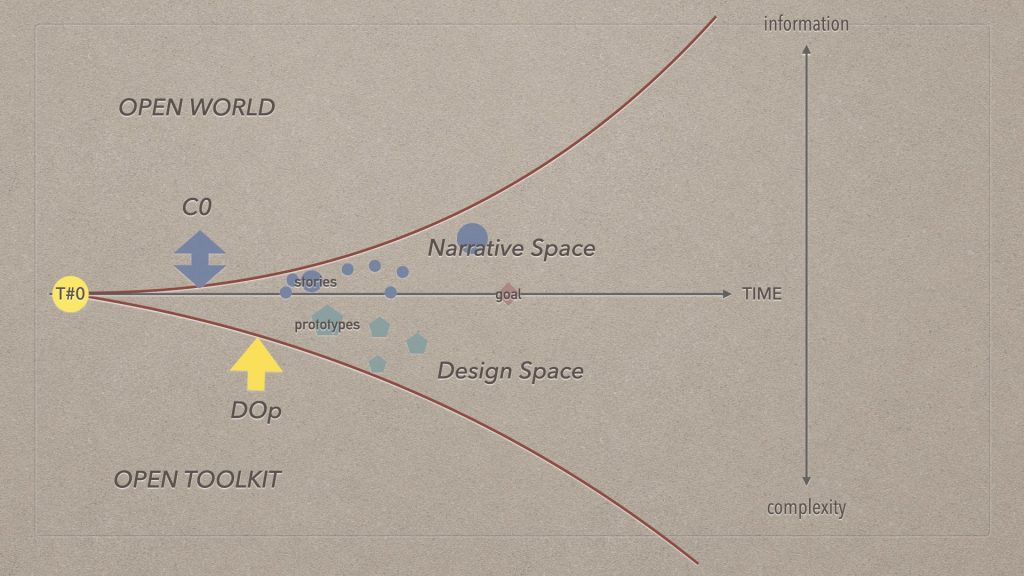
- To be complete a small description of a T-Zero, the first iteration of a Trasformatorio in an area. Time goes left to right. Up we have the “narrative space”. See the picture above.
- Everything that happens in this space and is documented is a story. It is documented by a art gesture, so is already a transformation of a finding.
- To allow the existence of the story (its representation) you need a prototype that is immediately embodied into a performative situation.
- The fact you have allowed collaboration between artists on the territory gives you a high quality, engaging event compared to the usual presentations.
- The fact that the artist works on the found material ensures the co-authorship of the transformed artwork that is therefore co-owned by the community and the artist.
- Prototypes elaborated on the observations and materials provided during a trasformatorio are already co-designed and shared with he target territory
- Goals are adjusted according to a shared governance structure and tested on the shared situation assessment so that consensus is easier to reach
- Complexity and information have to be balanced in the design space and the narrative space. To do so the Development and design sprints mast be bounded to a open toolkit of simple interoperable component.
- Every iteration changes the toolkit in a path of appropriation of design and communication techniques. The community learns and shift in the flow
- C0 stands for Communication event, were communication is intended for outside the local area of intervention. Contact with local authority and press is crucial in the pre production phase. Direct contact with “audience” is to be implemented for every story to be set as such.
- The GOAL is the stated “final” event, in a T-Zero is a performance open to the public, often village wide. That involves everyone.
- Quality of an event like that is unmatchable by any other (design thinking) prototyping process
2. How to do it again
- We stick with the theme of this talk: HOW TO DO IT. Note that you don’t move into a situation like Giampilieri saying villagers what to do, with your questions and answers, with your pre conceived stories. You have to find a way to get invited and start building connections by suspending your judgement and listen.
- it can be done without money because money is not the only value in this context
- it cannot be done without connection
We have documented the case of Giampilieri and Scaletta widely in our website. Is a success story and finally, after these successes we defined what we expect to be a T-Zero. Now let’s find another case of intervention were the technological angle is clearly stated. This consist in what I call a T-One intervention, a second stage.
2.1. T-ONE, NGI LEDGER 2019
- The first thing I requested to the 16 LEDGER teams was to be part of a learning community.
- still they were competing for the second stage were only 8 would pass
- but I organised activities accordingly.
- In Ledger the request was to intwine on a already defined project path and there were limits we had to carve into
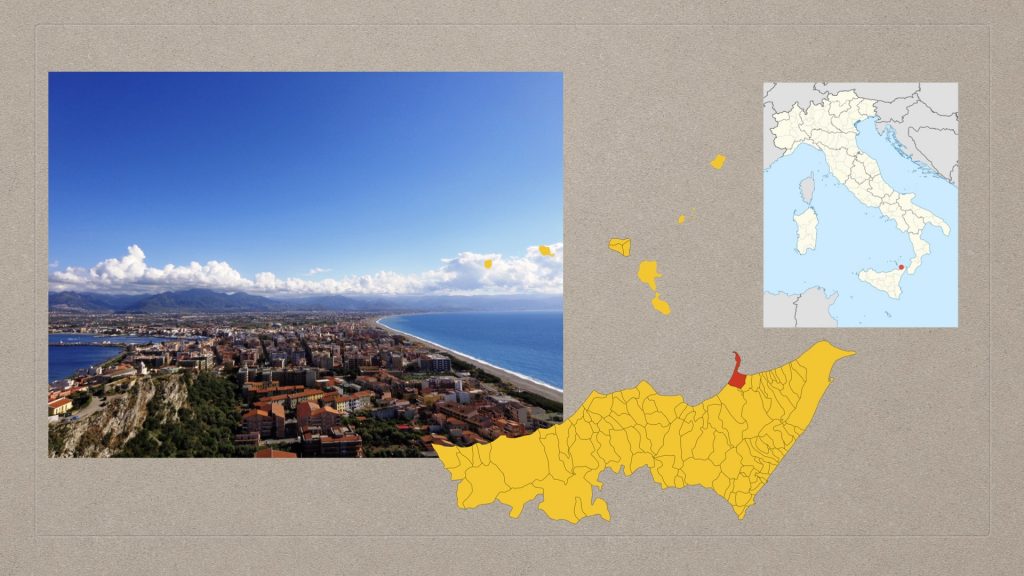
- the long lost art of prepared situation
- This in Ledger Bootcamp was achieved by task: first to find from remote as much information as possible on Milazzo and prepare “because you will be evaluated on the base of a mock up MVP made using all you know and to be delivered at the end of the week in a open presentation”
- choosing the place to have maximum variety: Milazzo-Sicily
- and the actors:
- core team (trasformatorio hardened veterans, locals)
- active force (the teams, the artists, the mentors)
- prepare a receptive ground with local press and network
- use the landscape
Video about Ledger: https://vimeo.com/376193538
- Some Participatory elements of the methodology
- iterate and feedback
- put all players together and sprint: maximum variety (see Holmgreen Principles in permaculture)
- disrupt habits avoid comfort zones
- oblige to self organisation
- let common language emerge from stories
- be aware of emergence of patterns
- welcome them
- and disrupt them
- switch roles often
- always embody the situation you design for
- keep clear access to other stakeholders (see paper)
- enjoy improvisation (see the paper)
- use both friction and care in communication:
- cause friction in controlled moments
- use empathy and care when you get genuine and emotional reactions
- to put in your toolkit: NVC
- Avoid being a leader, consider leadership is an interchangeable role
- roles not ranks
- every element embodies more functions at the same time! ( so use permaculture design strategies)
- CHAOS IS A TEACHER!!!
- What happens
- nothing you had planned is working as planned
- To be able to observe a crisis then was enough to let the teams organising their travel.
- The first circle was about “how you arrived here?”
- Strip down to the basics: complex preparations will be obsolete fast
- Building the basics is a good team building exercise
- in T 0 for example we had to build the kitchen asking people in the village to borrow us pans and tools, in T Giampilieri we cleaned up and repurpose a unused temporary structure as a common space etc.
- hold the narrative within a strict dramaturgy;
- key questions,
- clear metrics and well defined measures
- clearly stated objectives
- co-production as a mean to define ownership and commons
- active observation exercises never stops
- chaos is a teacher
- Improvisation is something you train for!
- Stuff happens: Serendipity in living labs is the theme of the paper, read the paper!
- Always put everyone out their comfort zone … then build bridges
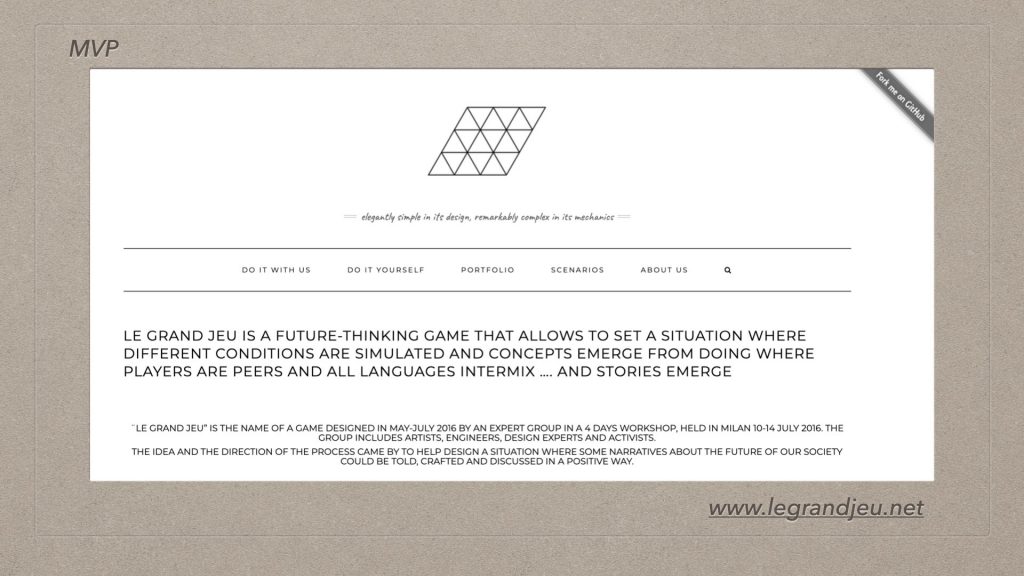
- A case for complex discourses: complexity is not well handled with multidisciplinary language.
- Give space to situations that help complex discourse: fireside talk, “show me”… etc.
- the open door: storytelling and crafting as a way to keep the commons narrative consistent
- prefer always consistency over coherence
- History
- Forming, Storming, Norming, Performing without “Mourning”: myth making, rituality, tradition…
- The concept of participant enlarged:
- the non anthropocentric perspective, how does the landscape talk, the basic idea of the “Parliament of Things” declined in the attempted trasformatorio IoT spinoffs
- Sounds like an enormous task. Yet Situations can be small. For example: LGJ: let a lot of things emerge from a situation and an activity like a table game.
- if you have to reconstruct all my philosophy from zero you can get all the essence from LGJ
- LGJ is not a work of one person; is co-authored with Raffaella Rovida and designed in a participatory lab constructed as a short trasformatorio sprint
3. 4 How to scale up? Do we really need to scale up?
- We have heard a lot of ideas here in NGI-Saloon about scaling up good practices to large population/numbers up to a 500 million people eurozone.
- Trasformatorio ideas come out from a very small effort: are ready to implement for real?
- Do we have a problem? NO.
- Scaling up is allowing the emergence of self organising and self similar structures,
- Scaling UP needs help from policing at level of infrastructure and protocols
- a restructuring from bottom up implies an economy of the commons, allowed to grow with an eye to Ostrom’s 8 principles, is a fractal structure: simple rules that feedback into self similar structures with positive and mathematical characteristics, because we need to keep an eye on consistency (measure)
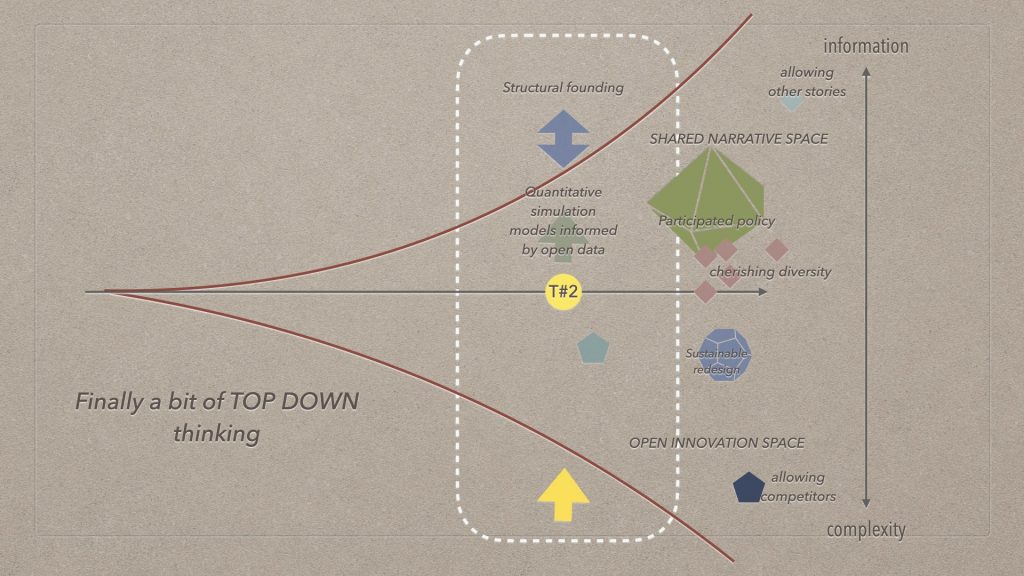
- Towards a T-TWO
- Look the image above
- Add to the post T-One situation a development of quantitative simulation models informed by open data that are able to observe the evolution of the agents seeded and evolved in the area during the time of Trasformatorio and use them to direct larger scale observation and policy for example through structural founding, taxation and credit.
- evolve a practice of participated policy in the narrative space that feeds and is feeded back by the overall shared vision emerged from the area and compete with alternative visions in a sane way
- Es: a civic open lora network (Giampilieri) with deployed sensors; local currencies for km zero economic values etc.
- test the economic value of the sustainable redesign of local activities allowing competition in a balanced way (balance is key)
- For example: how to direct structural founding?
- T-TWO: make models of complex systems as a form of policy
- policy informed through simulation as an example the knowledge developed by cad-CAD see: cad-CAD: An open-source Python package that assists in the processes of designing, testing and validating complex systems through simulation.
- comprehensive and co-designed data commons (T) tht insert open data informed policies and Cyber Phisical Systems into the site specific shared narrative of a site
- What do we need?
- the possibility of learning more
Thank you very much for your time and attention.
4. Recommendations
- develop situation awareness while in the situation
- As above so below: about connecting top down with bottom up and not against
- “A” situation is not “The” machine
- shift: participants in a Flow of situations versus problem solving actuators
- Iterated Design for situation: See the image again
- please spread the notion of Zero Sum Games instead of competition in your school system
- importance of listening and how it is a active exercise
- the dialectical nature of macro phenomena and micro economies
- a proper understanding of science
- a fearless attitude towards complexity
- shared and universally understood metric as a proper social exercise of political agency
- over Leibniz dead body powered by Gramsci’s
- Pedagogy as Innovation as pedagogy
- Enablers
- Hybrid forms of embodiement
- Radical Transparency and the social contract
- trustable evaluation of results
- Value Flows
- Redesign of money and law
- Economics of ownership versus co-designed stewardship of commons
- To move outside of disciplines
- to elaborate a pedagogy
- De-disciplinarity (No School? Unschooling? Hacker life?)
- If Chaos is a teacher, and Polemos the father of all things, let’s keep “the mothers of invention” by our side.
5. Reality checks
- What do I intend when I talk about “art” I got used to talk about art and theatre to audiences of technicians engineers and lawyers. So i find myself sometimes confronted with people that think theatre is a synonymous of “prepared representation intentioned to deceive” and “art” is something dead to be “view/enjoyed” in museums and take (or not) selfies with. As well the participants from the place we operate into would probably never see themselves as gallery goers, and they probably think they dislike/not understand the language of art, starting from abstract art not to mention the contemporary art languages (the crazy Marinas and the obnoxious Demians and how all has to be admired mostly for the price tag). Sorry to point out as well that “to do philosophy” is not to be intended as “the activity of loosing time into debating answers to impossible problems while someone else works to solve them” as many engineers deep down believe. Is the state of mind of being out there, wondering in amazement about what to observe, question and chat about while walking the path. I like philosophers that have good shoes. Things I will not manage to talk
- Trasformatorio: art as in craft as in art
- Embody the right body and you are part of the first or second order cybernetic regulator
- Being in the flow: data, modelling and awareness (of changes, of happening, of actors)
- the pedagogical role of regeneration
- Paideia: active pedagogical imagination
5.1. Smalls shots extra for the friends of Sophia
- Poetics/Poiesis vs Aesthetic/Aisthesis
- Greek poiētikos “pertaining to poetry,” literally “creative, productive,” from poiētos “made,” verbal adjective of ποιεῖν “to make”, poiesis meaning “the making/remembering of a poem”, Poiesis (from Ancient Greek: ποίησις) is “the activity in which a person brings something into being that did not exist before.
- aisthētikós proto indoeuropean: au* to perceive, It is the hypothetical source of/evidence for its existence is provided by: Sanskrit avih, Avestan avish “openly, evidently;” Greek aisthanesthai “to feel;” Latin audire “to hear;” Old Church Slavonic javiti “to reveal.” etc…; aisthanesthai “to perceive (by the senses or by the mind), to feel,”
6. Readings
6.1. Books
- Barba, E. On directing and dramaturgy (Routledge, London, 2012)
- Beer, S., Designing Freedom, (1995)
- Bishop, C., Artificial Hells: Participatory Art and the Politics of Spectatorship, (Verso, 2012)
- Boal, A. and A. Jackson, Games for Actors and Non-Actors., (Taylor and Francis, 2005)
- Boal, A., Theatre of the oppressed, New edition ed. (Pluto Press, 2008)
- Bonsiepe, G., ‘Design and Democracy’, Design Issues, 22/2 (2006), 27–34
- Dockx N., Gielen, P. Ed., Commonism, a New Aesthetics of the Real, (Valiz , 2018)
- Dumas, H. S., The KAM story: a friendly introduction to the content, history, and significance of classical Kolmogorov-Arnold-Moser theory, (World Scientific, 2014)
- Freire, P., Pedagogy of the oppressed, 30th anniversary ed ed. (Continuum, 2000)
- Haraway, D. J., Staying with the trouble: making kin in the Chthulucene, (Duke University Press, 2016)
- Holmgren, D., Permaculture Principles and Pathways, (Permanent Publications, 2011)
- Litaer, B., Dunne, J., Rethinking Money, (Berrett-Koheler, San Francisco 2013)
- Pirsig, R. M., Zen and the art of motorcycle maintenance: an inquiry into values, (Harper Perennial Modern Classics, 2008)
- Russo, L., La rivoluzione dimenticata: il pensiero scientifico greco e la scienza moderna, (Feltrinelli, 1996), eng. tr. The Forgotten Revolution, Springer 1998
6.2. Links
- Trasformatorio foundation: do.trasformatorio.net
- Trasformatorio community website: trasformatorio.net
- Le Grand Jeu: www.legrandjeu.net
- Referenced paper with S. Sauer, “Collective improvisation as a means to responsibly govern serendipity in social innovation processes” published in the Journal of Responsible Innovation in 2020. can be downloaded here: https://www.tandfonline.com/doi/full/10.1080/23299460.2020.1816025
- Video about NGI-Ledger as shown in the presentation: https://vimeo.com/376193538
6.3. Ostrom: 8 Principles for Managing a Commons
- Define clear group boundaries.
- Match rules governing use of common goods to local needs and conditions.
- Ensure that those affected by the rules can participate in modifying the rules.
- Make sure the rule-making rights of community members are respected by outside authorities.
- Develop a system, carried out by community members, for monitoring members’ behaviour.
- Use graduated sanctions for rule violators.
- Provide accessible, low-cost means for dispute resolution.
- Build responsibility for governing the common resource in nested tiers from the lowest level up to the entire interconnected system.
7. Disclaimers and thanks
- All flavours that savour my talk today come from places and experiences and were enacted together; when gets to responsibility I take it fully but as content goes, there are some things to say:
- What has been developed inside the project Trasformatorio has grown on shoulders of giants, especially as long as the performance and art practices involvedof whom i touched only a surface of many uninterrupted schools and traditions
- Trasformatorio is a participated evolutionary learning community were credit is given to all participants
- Since 2020 we set this long ongoing project to a no-profit foundation do.trasformatorio.net
- Reflects Field work campaigns since 2013, practices since 1990.
- Trasformatorio research was almost entirely co-produced by the participants
- The case study from NGI-LEDGER deserves a disclaimer: from march 2020 onwards I am not anymore involved with dyne.org and the NGI-LEDGER project
- Question my words
- Sometimes I believe in Poincare’ constructivism
